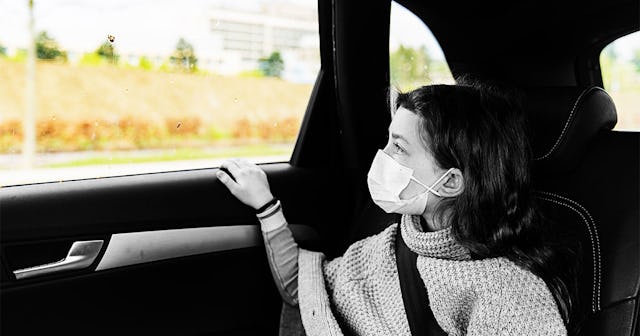CDC Study Finds Kids In Utah Daycares Infected Family Members With COVID-19

Over half a million kids in the U.S. have the coronavirus
Children in childcare are catching COVID-19 and spreading it to adults, especially immediate family members like siblings and parents, a new report by the CDC finds.
As researchers continue to look at how the coronavirus is spreading across the U.S., a new study that looked at two childcare centers in Utah found infected children under the age of ten have been shown to spread the virus to at least one to four people outside the childcare facility. Many of the children that tested positive for COVID-19 showed no symptoms.
There have been reports showing the impact of coronavirus in children and while kids have suffered less severe consequences as a result of the virus than adults and the elderly, they can spread the disease to that population. This continues to be of concern as schools and daycare centers reopen across the country.
In the study, which was conducted between April 1–July 10, 12 children became infected from someone else at daycare — most had mild to no symptoms at all — and through detailed contact tracing, researchers found that those kids spread the virus to between one and four people, mostly in their homes. In one case, an eight-month-old baby spread the virus to both parents. In another, one of the parents had to be hospitalized. Transmission was documented from these children to at least 12 (26%) of 46 non-facility contacts.
Both centers did have some strategies in place before the outbreaks such as daily temperature checks and some staff were asked to wear masks, though they weren’t mandatory. None of the children at either center were asked to wear masks.
CDC
As a result, the “CDC guidance for child care programs recommends the use of face masks, particularly among staff members, especially when children are too young to wear masks, along with hand hygiene, frequent cleaning and disinfecting of high-touch surfaces, and staying home when ill to reduce SARS-CoV-2 transmission,” the study’s author wrote.
It’s unclear how exactly the children acquired COVID-19 while at the daycare centers, but the CDC reports that several staff members in the Utah daycares reportedly came to work despite knowing that a member of their own household tested positive or showed probable signs of having COVID-19. “Staff members at two of the facilities had a household contact with confirmed or probable COVID-19 and went to work while their household contact was symptomatic,” they said.
As parents grapple with how to keep themselves, and their parents, safe in their communities; school reopening and gatherings are one major area of concern.
“While children may be spending time with other people as they return to daycare or school settings,” the CDC said, “it is important to remember the exposure to additional children and adults outside of daycare or school should be managed to decrease risk.” Additionally, they recommend an increased availability of COVID-19 testing, including “timely results and testing of contacts of patients in child care settings regardless of symptoms.”
As of Friday afternoon, 193,000 people have died in the U.S. as a result of the coronavirus according to Johns Hopkins University and at least 514,000 kids have had COVID-19, according to data from the American Academy of Pediatrics. That’s half a million kids who can spread the virus throughout their communities.
Information about COVID-19 is rapidly changing, and Scary Mommy is committed to providing the most recent data in our coverage. With news being updated so frequently, some of the information in this story may have changed after publication. For this reason, we are encouraging readers to use online resources from local public health departments, the Centers for Disease Control, and the World Health Organization to remain as informed as possible.
This article was originally published on